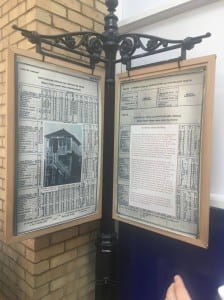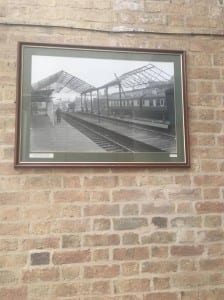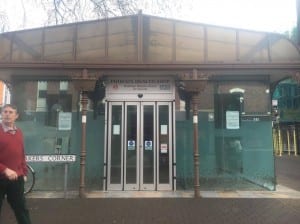In the morning, I met up with my group members to discuss and reflect on out ideas. We decided we ill be doing an installation piece (Not per formative) based around the audiences romance life’s. We’ll be discussing with the audience about their relationships, and how certain areas in Lincoln may bring back certain memories relating to their relationship. We have concentrated on involving visual art such as, a washing line with images of the couples hanging, posted notes describing how certain areas of Lincoln remind them of their partner, creating paintings to express how they feel about their partner and a placard advertising our aims towards the audience.
In the session with Steve, we began with a 4-5 minute video explaining “What is live art” by Joshua Sofaer, with him standing on a busy street in London. He describes live art in the sense that the actor “chooses to make work directly in front of the audience”. An interesting point he makes is that when a site specific performance is taking place “the city itself becomes a gallery”. Towards the end of the video, there is a comic aspect where he turns around and there’s a large hole in his trousers showing his bum. Next Steve told us he wants to arrange schedules for each group, for rehearsals, meetings and tutorials.
Steve sent each group out to explore the city center, for performance ideas. This was really helpful as we came across some interesting areas for the performance. We’ve considered setting the performance near a building close to speaker’s corner because it in a busy section of the high street, giving us to opportunity to appeal to a wide range of audience members.. Also we have looked at the old train station, which now is a cooking utilities store called Lakeland. The station became particularly interesting when we met an Old couple, explaining the history behind the station. Considering our performance is based around relationships, we used to opportunity to ask about their relationship (E.G, how they met, how long there we’re together). It was really interesting, because the station was a significant factor to there relationship when they were younger, as the man traveled on the train everyday to visit her in Newark. After this, we headed back to meet classroom to reflect on each groups ideas.
This is one location we considered using for our performance. We considered having a washing line hung from lamppost, to the other.
Below are images of the old train station, situated inside the Lakeland store.
Here is an image of the building we’re considering to use for our performance.
We are thinking about placing the washing line idea, hanging images and information of the couples around the pillars.









